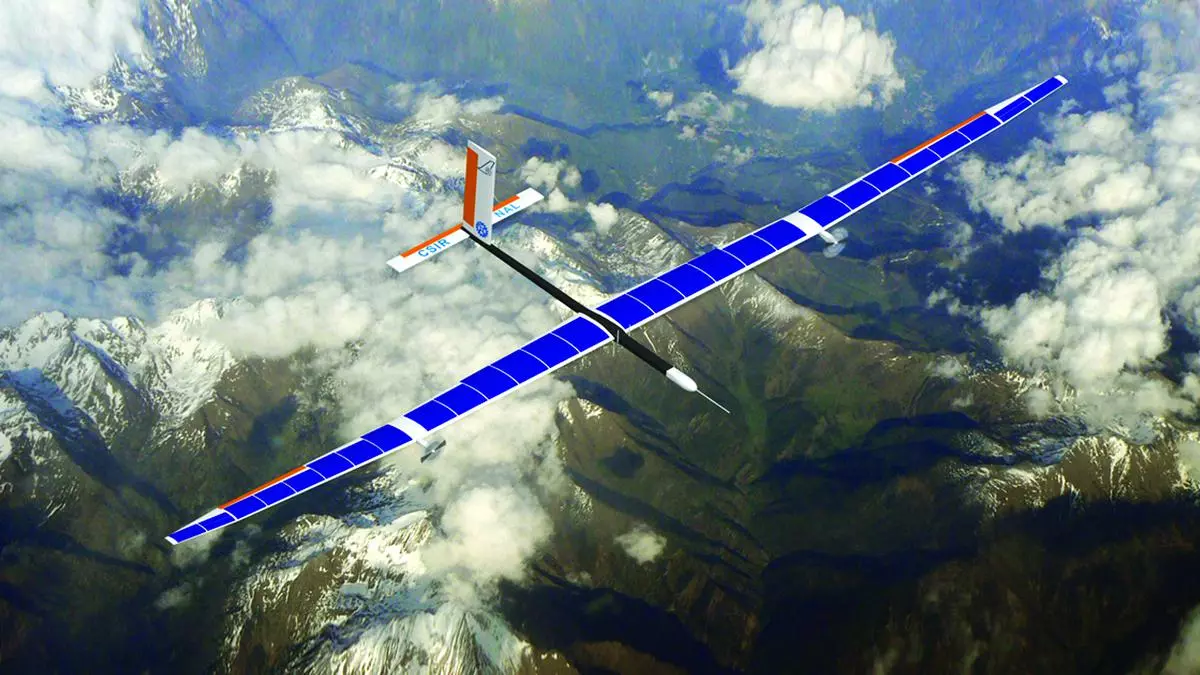SOURCE: RAUNAK KUNDE / NEWS BEAT / IDRW.ORG


Indian Air Force (IAF) issued a Request for Information (RFI) for the procurement of three High Altitude Platform Systems (HAPS) under the Make in India initiative, marking a significant step toward enhancing India’s aerial surveillance and intelligence-gathering capabilities.
These advanced, solar-powered, unmanned platforms are designed to operate in the stratosphere, providing persistent Intelligence, Surveillance, and Reconnaissance (ISR), acting as airborne data relays for other unmanned systems, and supporting Electronic Intelligence (ELINT) and Communications Intelligence (COMINT) missions. This move underscores India’s commitment to self-reliance in defense technology and positions HAPS as a game-changer for military operations along its borders and in the Indian Ocean Region (IOR).
Defined by the International Telecommunication Union (ITU) as “a station on an object at an altitude of 20 to 50 km and at a specified, nominal, fixed point relative to the Earth,” HAPS are long-endurance, unmanned aerial vehicles (UAVs) or airships that operate in the stratosphere, typically at 18–20 km. Unlike satellites, which orbit at much higher altitudes, or conventional drones, which operate at lower altitudes, HAPS combine the flexibility of aircraft with the endurance of satellites. Powered by solar panels and high-energy-density batteries (e.g., lithium-ion with silicon nanowire electrodes), HAPS can remain airborne for weeks or months, offering persistent coverage at a fraction of the cost of satellites.
HAPS are equipped with advanced sensors for ISR, ELINT, and COMINT, making them ideal for monitoring vast areas, relaying data between unmanned platforms, and intercepting enemy communications or radar signals. Their high-altitude operation—above commercial air traffic and most weather disturbances—ensures minimal interference and resilience against many air defense systems, as they operate beyond the range of most surface-to-air missiles.
The platforms will provide continuous surveillance over strategic areas, such as India’s borders with Pakistan and China, and the IOR. Capable of loitering for up to 30–45 days at 18,000 meters, HAPS will deliver real-time imagery, target identification, and change detection, addressing critical needs for long-term weapons planning and battlefield awareness.
HAPS will serve as communication hubs, relaying data between other unmanned platforms, such as drones or satellites, enhancing network-centric warfare. This is particularly valuable in remote or mountainous regions, where terrain disrupts terrestrial signals.
By intercepting electronic emissions (e.g., radar signals) and communications, HAPS will bolster India’s ability to gather actionable intelligence on adversary movements and intentions, crucial for countering threats like cross-border terrorism or Chinese incursions in Ladakh.
The RFI specifies that the HAPS must operate on a “contractor-owned, contractor-operated” basis for one year, logging at least 1,500 flight hours, and be capable of pan-India operations, navigating jet streams and equipped with anti-collision systems and satellite links. The requirement for a minimum 50% indigenous content aligns with the Make in India initiative, fostering domestic innovation and reducing reliance on foreign suppliers.
The IAF’s RFI builds on ongoing efforts to develop indigenous HAPS, driven by the Make in India and Atmanirbhar Bharat initiatives. Key players include:
National Aerospace Laboratories (NAL): NAL, under the Council of Scientific and Industrial Research (CSIR), has developed a prototype HAPS, one-third the size of a full-scale system, which was slated for testing at 3 km altitude in May 2023. Director Abhay Pashilkar noted that a full-fledged HAPS, operating at 20 km, could be ready within 2–3 years.
Hindustan Aeronautics Limited (HAL): HAL, in collaboration with NewSpace Research & Technologies, is developing HAPS under the Combat Air Teaming System (CATS) program, initially self-funded but awaiting ?700 crore in government funding. A scaled prototype with a 70-foot wingspan is under development, with a 3–4-year timeline.
Private Sector: NewSpace Research achieved a national record in March 2024, with its HAPS prototype flying for over 24 hours at ATR Chitradurga, supported by iDEX and the Ministry of Defence. VEDA Aeronautics, partnered with UAE-based Mira Aerospace, conducted stratospheric test flights and aims to deliver a market-specific HAPS by mid-2024.
Larsen & Toubro (L&T): L&T has signed an MoU with a startup for advanced HAPS, indicating private sector interest in this niche technology.
NOTE: Article cannot be reproduced without written permission of idrw.org in any form even for YouTube Videos to avoid Copy right strikes. Websites doing illegal reproductions will get DMCA and Legal Notices.